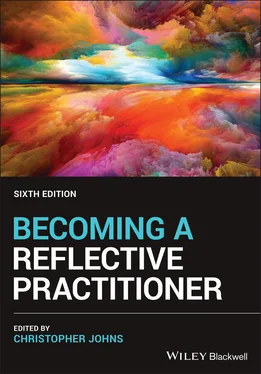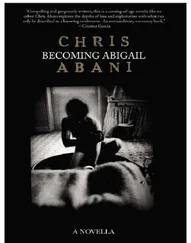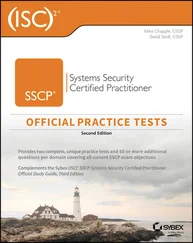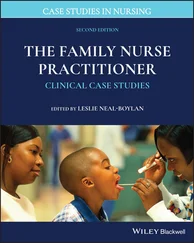Becoming a Reflective Practitioner
Здесь есть возможность читать онлайн «Becoming a Reflective Practitioner» — ознакомительный отрывок электронной книги совершенно бесплатно, а после прочтения отрывка купить полную версию. В некоторых случаях можно слушать аудио, скачать через торрент в формате fb2 и присутствует краткое содержание. Жанр: unrecognised, на английском языке. Описание произведения, (предисловие) а так же отзывы посетителей доступны на портале библиотеки ЛибКат.
- Название:Becoming a Reflective Practitioner
- Автор:
- Жанр:
- Год:неизвестен
- ISBN:нет данных
- Рейтинг книги:5 / 5. Голосов: 1
-
Избранное:Добавить в избранное
- Отзывы:
-
Ваша оценка:
- 100
- 1
- 2
- 3
- 4
- 5
Becoming a Reflective Practitioner: краткое содержание, описание и аннотация
Предлагаем к чтению аннотацию, описание, краткое содержание или предисловие (зависит от того, что написал сам автор книги «Becoming a Reflective Practitioner»). Если вы не нашли необходимую информацию о книге — напишите в комментариях, мы постараемся отыскать её.
Becoming a Reflective Practitioner
Becoming a Reflective Practitioner
Becoming a Reflective Practitioner — читать онлайн ознакомительный отрывок
Ниже представлен текст книги, разбитый по страницам. Система сохранения места последней прочитанной страницы, позволяет с удобством читать онлайн бесплатно книгу «Becoming a Reflective Practitioner», без необходимости каждый раз заново искать на чём Вы остановились. Поставьте закладку, и сможете в любой момент перейти на страницу, на которой закончили чтение.
Интервал:
Закладка:
Whilst working through the cues, the practitioner is mindful of drawing tentative insights prompted by the cue – What tentative insights do I draw from this experience? As such, you may benefit from reading Chapter 5to gain an understanding of the nature and breadth of insights.
What is Significant to Reflect On?
Within any experience, there will be many aspects of practice that the practitioner can reflect on given the complexity of everyday practice. However, what is most significant will usually be obvious. But don’t worry if not. Significances will emerge as you reflect through subsequent cues and with guidance.
Why Did I Respond as I Did?
Having explored what might be significant, the practitioner scrutinises their response(s) in relation to what they were trying to achieve. This naturally raises the question, ‘what was I trying to achieve?’ In response, the practitioner reflects on their clinical judgement and rationale for responding as they did. This may not be easy because many decisions are made reactively or intuitively as if processing information takes place below the mind radar.
The practitioner can review their response through four movements; assessment, judgement, response and evaluation ( Table 4.2). Asking ‘How did I assess this situation?’ invites the practitioner to reflect on the way they perceived the situation and the tools they use to facilitate this. ‘Did they listen attentively enough to the patient’s story?’ Krishnamurti’s words are challenging (1996, p. 178/179):
Very few of us listen to what is being said, we always translate or interpret it according to a particular point of view. We have formulations, opinions, judgments, beliefs through which we listen, so we are never actually listening at all; we are only listening in terms of our own prejudices, conclusions or experiences. We are always interpreting what we hear, and obviously that does not bring about understanding. Whatever we listen to is always apprehended through the screen of this conditioning; therefore we can never approach any problem with a fresh mind… where the mind’s conditioning is imposed by society.
Listening and observing is the key to perception. Listening is tuning into the other’s wavelength and flowing with them. This may be challenging when that person’s story is uncertain, for example, with people who are distressed, mentally disturbed or terminally ill, situations where their story may be chaotic.
Based on the assessment, the practitioner can then reflect whether their clinical judgement and responses were adequate in light of desirable outcomes.
Did I Respond in Tune With My Vision?
An aspect of ‘why did I respond as I did?’ is to respond in tune with one’s vision. Vision is a background to all experience necessary to establish creative tension. This cue lifts vision into scrutiny – ‘did I act in tune with my vision?’ bringing vision into focus. It challenges the practitioner as to what their vision is and what it means as something lived beyond the words used to express it. Thus reflection is always an inquiry into vision.
TABLE 4.2 Model for Clinical Judgment
| Effective action |
| How did I assess the situation? |
| What was my rationale for clinical decisions to meet perceived outcome? |
| What actual actions did I take to meet perceived outcomes? |
| Evaluation: what were the consequences of my actions? |
| Did I meet perceived need? |
Did I Respond Effectively in Terms of Consequences?
Actions have consequences. On the surface, consequences may be quite obvious. Others be less so. Imagine throwing a pebble into a pond. The splash is the immediate consequence and the ripples spreading out are further consequences both short‐term and long‐term that are less easy to perceive.
To ask the question – ‘was I effective?’ requires the practitioner to have a grasp of what effectiveness would look like. Some situations can be observed or measured, for example wound healing. Other situations less so, such as giving advice whereby judging effectiveness is subjective and best perceived from the patient’s perspective.
Considering effectiveness in terms of consequences facilitates the development of foresight‐ the ability to weigh up the likely consequences of actions as part of the decision making process. Foresight is intuitive, for how can consequences be known given the uncertainty of everyday practice? Aristotle (2004) termed this ability as phronesis or practical wisdom – being mindful of the best way to respond within a particular situation considering the ethical consequences of such response.
Did My Feelings and Attitudes Influence Me?
Our feelings and emotions are most often the trigger for reflection, notably negative feelings such as a sense of failure, frustration, distress, anger, fear of authority with its threat of sanction for doing the wrong thing. They create an emotional tension within us, making us pay attention to our experiences. Senge (1990) argues that we need to deal with emotional tension before we can focus on creative tension, as if emotions smudge the mirror and distort rational thought. Boud et al. (1985) also suggest we need to remove obstructive feelings as part of the reflective process. The feelings we experience also reflect the attitudes we hold.
Feelings reflect deeper underlying assumptions the practitioner may hold about the world but which they may not be aware of. As Cox (1988, p. 100) notes: ‘The therapist’s attitudes colour the atmosphere of therapeutic space. He is never as neutral as he thinks’. For example, ‘do I like this person?’ that link with theories of the unpopular patient (see later cue).
Clearly, feelings and attitudes influence decision‐making (Callahan 1988) and need to be understood and shifted if the practitioner is to realise desirable practice. Yet, they may not be easy to understand. They may stem from diverse sources. Ramos (1992) writes of an ‘emotional impasse’ where practitioners become emotionally entangled with patients. Dealing with the other’s suffering may be difficult for many practitioners. It may be easier to avert your eyes and turn away rather than engage. Maybe it is more comfortable to turn away, and yet that itself creates anxiety for the practitioner anxious to respond effectively.
Because negative feelings and fears are uncomfortable, practitioners are likely to reflect in order to defend themselves against negative feelings, drawing on defence mechanisms such as rationalization, sublimation, and projection, 1 rather than face up to them. However, negative feelings drain the practitioner’s energy. How often you heard practitioners cry ‘I’m drained!’
The practitioner may reflect superficially to avoid going deeper that might reveal deeper psyche factors or emotional scars that may be better left alone (Sacks 1976). Guidance is certainly helpful to engage negative feelings and unhelpful attitudes (see Chapter 6).
By paying attention to their feelings, the practitioner learns to know and manage their emotional self (Salovey and Mayer 1990). Hence what made me frustrated, angry, or fearful, I can understand and work towards resolving. Understanding itself is a balm for the worried mind simply because it brings some element of control.
As we reflect, we can begin to accept the feelings as our own rather than something that might destroy us. As Rosenberg (1998) notes, ‘little by little, we’re not so enslaved to things’ (p. 145). At every point, reflection is freedom to become who we desire to be. Beck (1997) recognises the discomfort reflection on feelings may incur but that it is worth it in long run. She writes (p. 42/3):
Читать дальшеИнтервал:
Закладка:
Похожие книги на «Becoming a Reflective Practitioner»
Представляем Вашему вниманию похожие книги на «Becoming a Reflective Practitioner» списком для выбора. Мы отобрали схожую по названию и смыслу литературу в надежде предоставить читателям больше вариантов отыскать новые, интересные, ещё непрочитанные произведения.
Обсуждение, отзывы о книге «Becoming a Reflective Practitioner» и просто собственные мнения читателей. Оставьте ваши комментарии, напишите, что Вы думаете о произведении, его смысле или главных героях. Укажите что конкретно понравилось, а что нет, и почему Вы так считаете.












